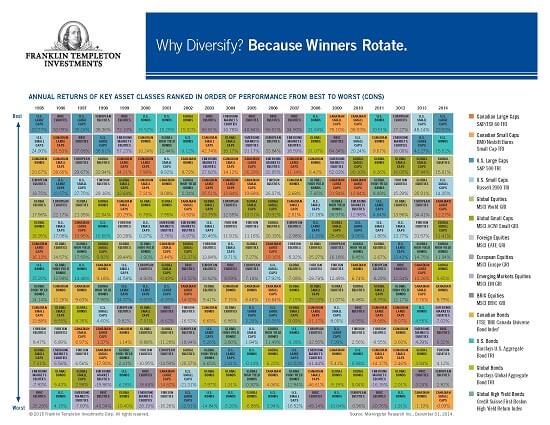Why diversify? This chart shows you why
Annual returns of key asset classes ranked from best to worst
Advertisement
Annual returns of key asset classes ranked from best to worst

Share this article Share on Facebook Share on Twitter Share on Linkedin Share on Reddit Share on Email